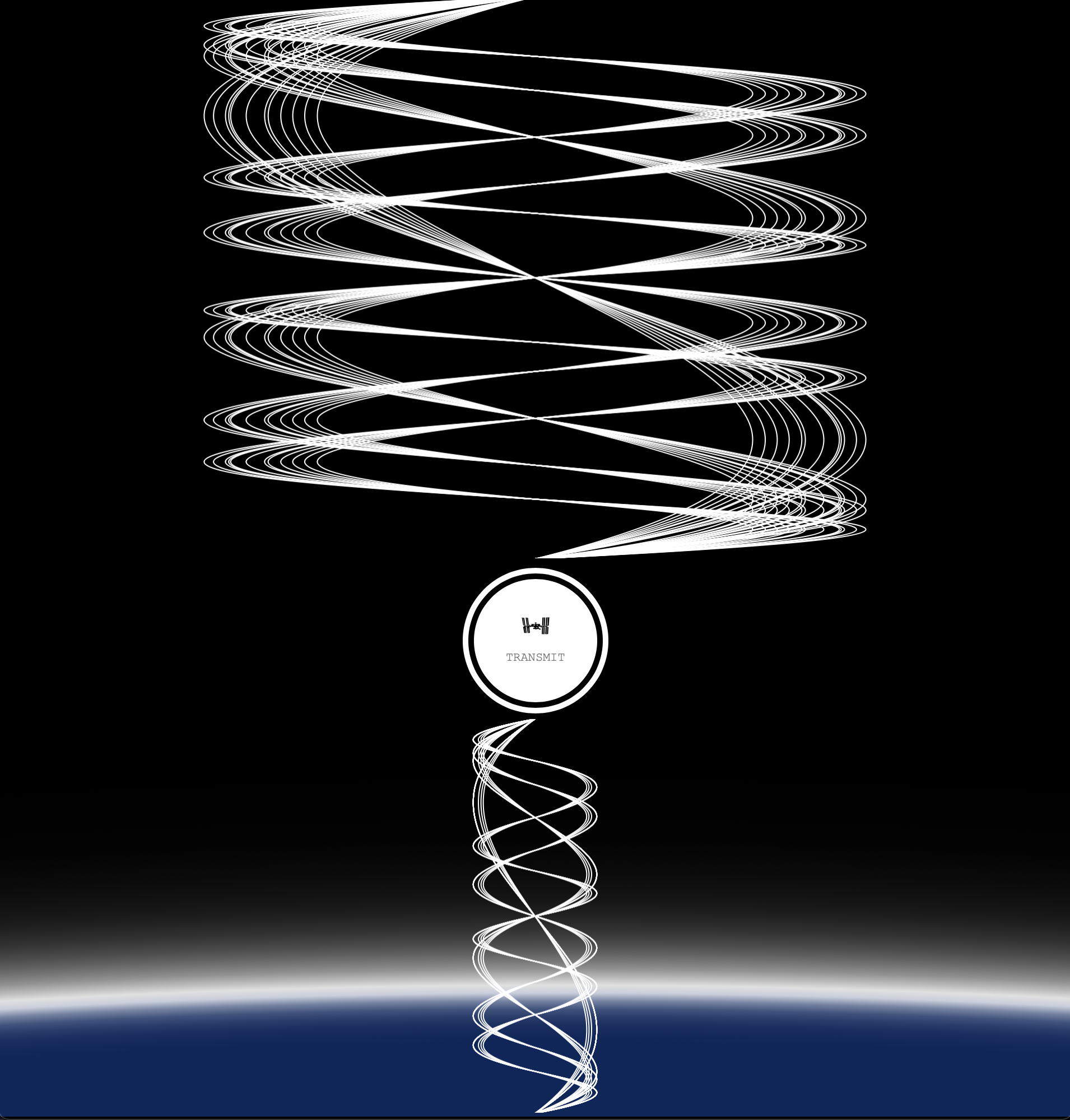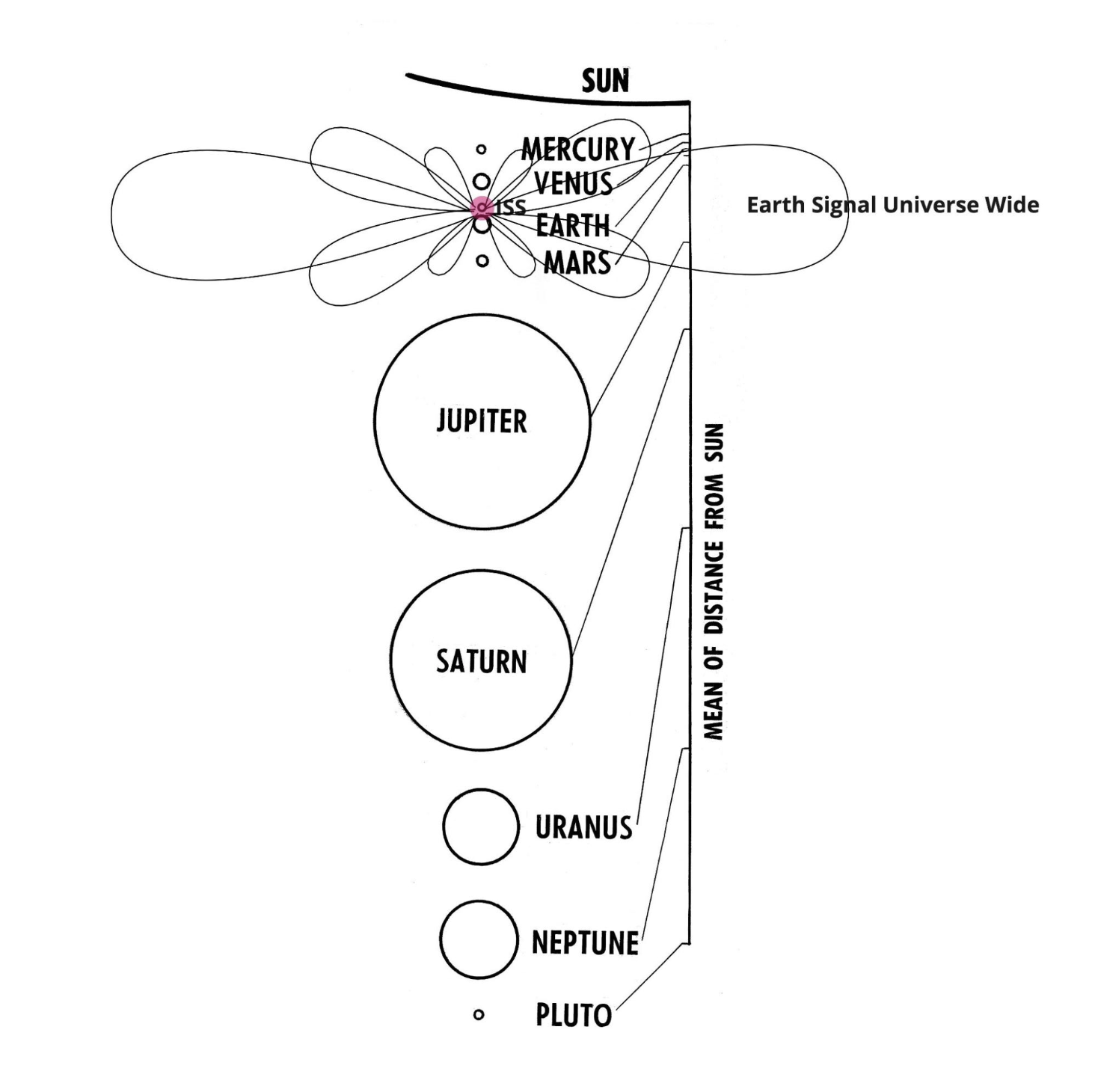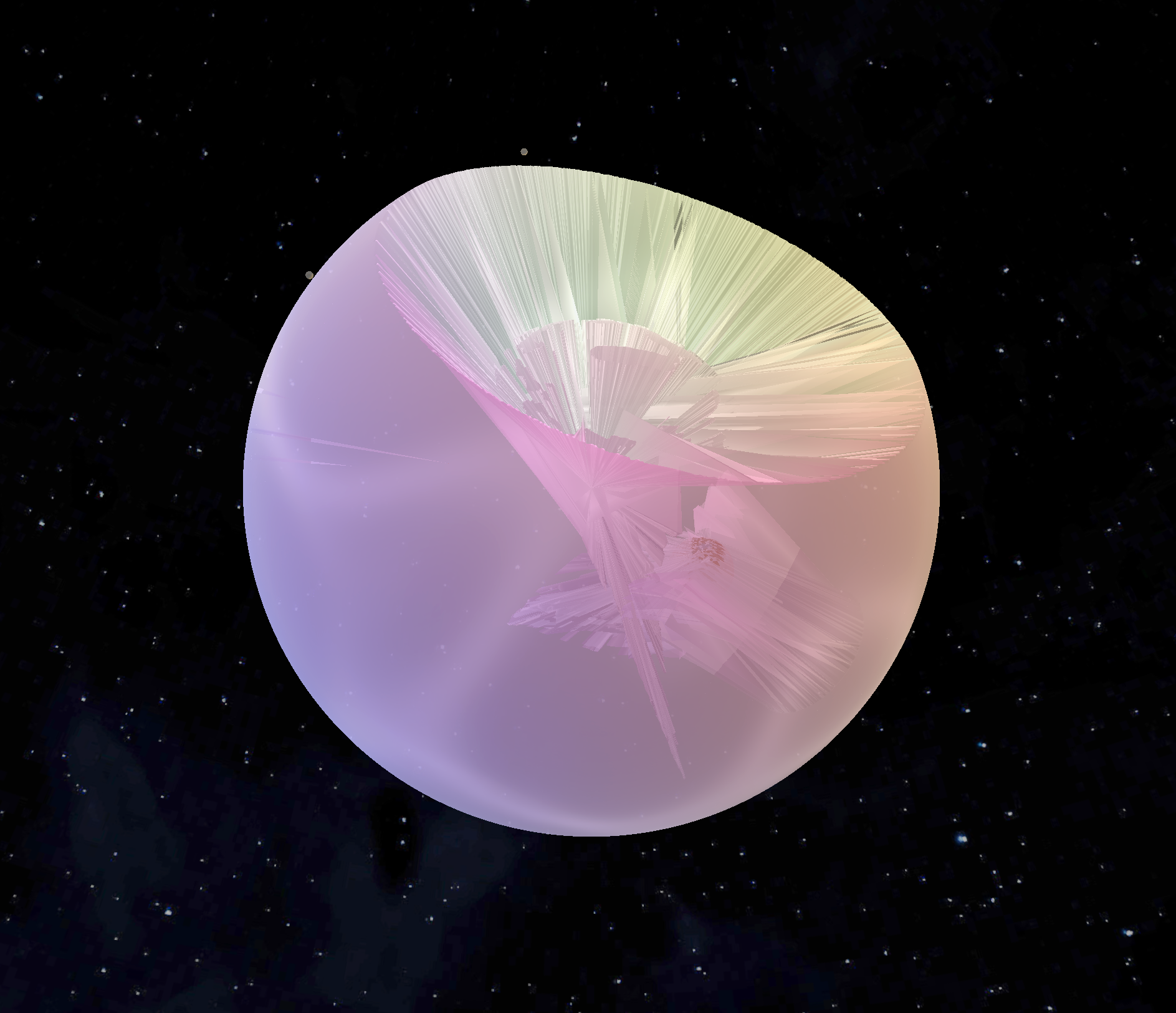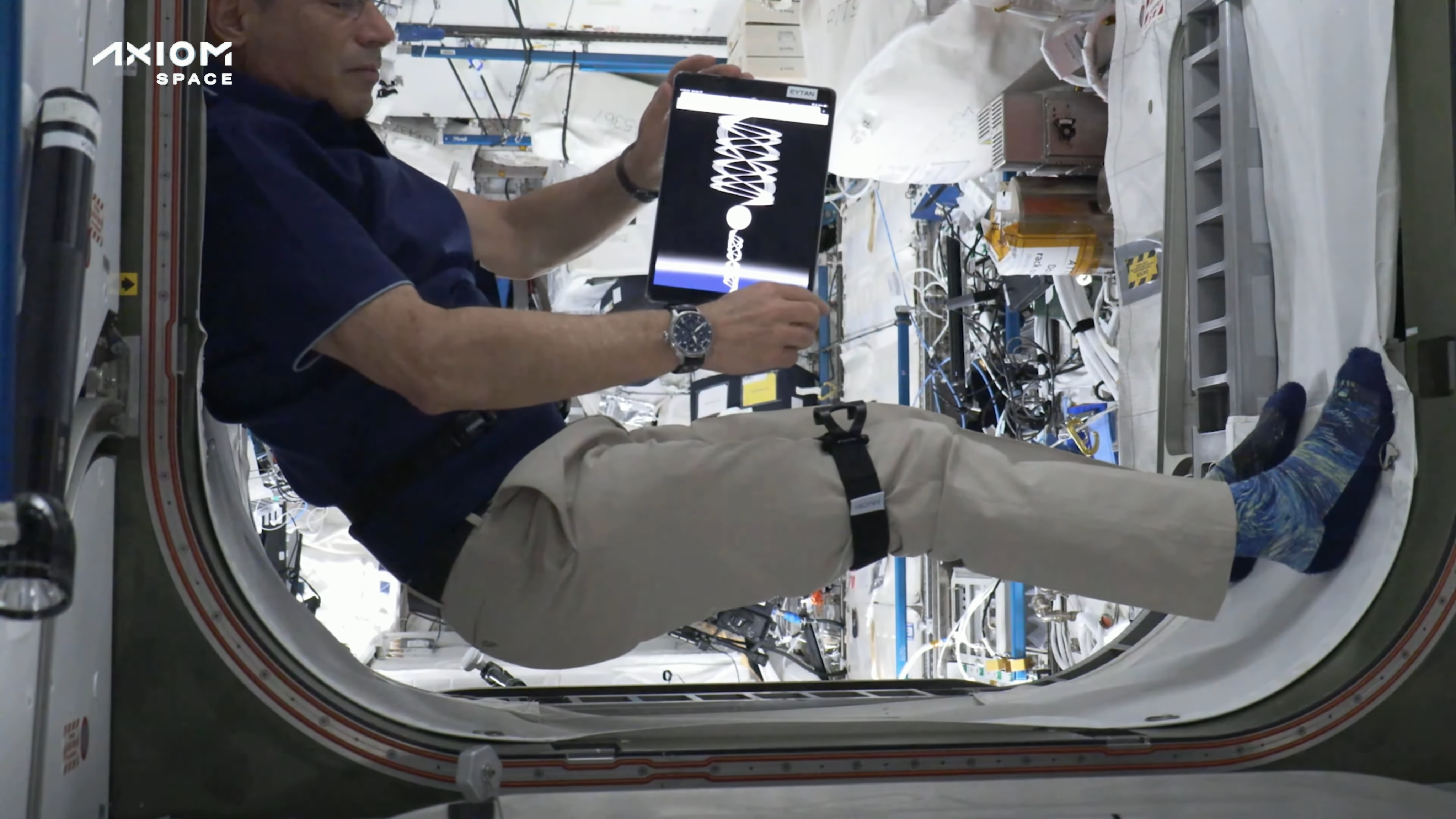How It’s Made: Earth Signal Universe Wide by Nimrod Astarhan

Activation website screenshot. Image courtesy of Yanai Toister and Nimrod Astarhan.
Activation website screenshot. Image courtesy of Yanai Toister and Nimrod Astarhan.
by Nadya Kelly (MA 2023)
In 2017, Eyal Gever became the first artist to launch a sculpture into space: #Laugh, created using zero-gravity 3D-printing technology.
Others soon followed, including School of the Art Institute of Chicago alum Trevor Paglen (MFA 2002), whose Orbital Reflector—a reflective, mylar sculpture—was launched into space as a temporary satellite and Professor Eduardo Kac (MFA 1990), whose Inner Telescope was assembled inside of the International Space Station (ISS). Now, student Nimrod Astarhan has entered the conversation with his most recent project, Earth Signal Universe Wide, a radio sculpture that sends a transmission out into space through earth-bound stations and the ISS.
Put together as part of Rakia’s Art Project—an initiative that seeks to create art that captures the essence of humanity through the medium of space—Earth Signal Universe Wide transmits an electromagnetic carrier wave to the ISS, which then generates a signal as large as our universe, symbolic of the transmission of a message from Earth’s inhabitants to the universe. The sculpture’s waves decrease in amplitude yet never lose their energy as they extend infinitely outward into space. We spoke with Astarhan to learn more about his inspiration for this project, its creation process, and its impact. This is how Earth Signal Universe Wide was made.

Prepatory sketch for Earth Signal Universe Wide. Image courtesy of Yanai Toister and Nimrod Astarhan.
Prepatory sketch for Earth Signal Universe Wide. Image courtesy of Yanai Toister and Nimrod Astarhan.
What was the inspiration behind this piece?
Earth Signal Universe Wide stems from both an engagement with contemporary technological media conditions as well as the lineage of conceptual art, both of which are shaped by and shape our relationships with unseen hierarchies and structures. Works such as Robert Barry’s 88mc Carrier Wave (FM), Walter De Maria’s The Lightning Field, and Ezra Orion’s intergalactic sculptures are examples of artworks engaging with this idea—that the work is an apparatus activating a mostly invisible, inaudible medium, or even an activation of it in and of itself.

A still from Earth Signal Universe Wide visualization. Image courtesy of Yanai Toister and Nimrod Astarhan.
A still from Earth Signal Universe Wide visualization. Image courtesy of Yanai Toister and Nimrod Astarhan.
In your artwork’s mission, you referred to this piece as cultural and human. Can you elaborate on this?
This is a work of rigorous, fierce abstraction. Its name is monumental, and such is its orchestration. But, its mission is not grand or spectacular. Rather, it’s evasive and almost self deprecating. It is a radio time sculpture created through a 1.5 hour long performance in which seismic activity from the lowest point on Earth was transmitted to the International Space Station, and from there, out into deep space and onwards. It's not meant to be universal or eternal, but rather expresses human and cultural desires: a yearning to transcend and a wish to communicate.
Walk us through the process of developing it.
The piece is the result of an exploration of the aesthetics of telecommunication infrastructures, electromagnetic energy as an artistic medium, antennas as generative sculptures, and thresholds of stimuli and perception. It is also a step along the way of a long term artistic research project I started with Yanai Toister about two years ago titled Spectral Choreographies.
“It's not meant to be universal or eternal, but rather expresses human and cultural desires: a yearning to transcend and a wish to communicate.”
How did you and your collaborators work together during this process?
Toister and I have been making work, teaching classes, and writing on this and related subjects together for the past two years, which provided a great foundation for this work’s inception and process. We partnered with the AX-1 mission’s team (the first all-private group of astronauts) and an ad-hoc group of experts on subjects such as theoretical and experimental astrophysics, geological hazards and seismology, software engineering, 3D simulation, and more. Without the skills, knowledge and resources of these collaborators, Earth Signal Universe Wide wouldn’t have been possible. Our collaborators were also somewhat of a first audience of the work. It met their fields of expertise on new terms, which was exciting and inspiring for everyone.

Activiation on the ISS. Photo by Astronaut Eytan Stibbe. Image courtesy of Yanai Toister and Nimrod Astarhan.
Activiation on the ISS. Photo by Astronaut Eytan Stibbe. Image courtesy of Yanai Toister and Nimrod Astarhan.
Are there any complications that arose with this project? How did it feel to create artwork that has an impact beyond our planet?
The complications were too many to list, but as was the case in this work, these led to some exciting developments. For example, the web interface used by astronaut Eytan Stibbe to activate the work, which ended up being, to our knowledge, the first net-art piece to be approved for access from the interplanetary internet, was not a part of the project to begin with.
To its impact beyond our planet, I'm not entirely sure I can say it had any of such. If the work could make a person question what they know, what they experience, what they think of, what they care about—this is all I ever ask of art. ■
Earth Signal Universe Wide was curated by Udi Edelman for the Rakia AX-1 mission, led by the Ramon Foundation, and supported by Mifal HaPais Council for the Arts. Its current progression as well as a 3D visualization can be viewed online at earth-signal-universe-wide.art
{{[http://www.saic.edu/news/students]STUDENTS}} {{[http://www.saic.edu/news/artconnectsus]ART CONNECTS US}}
